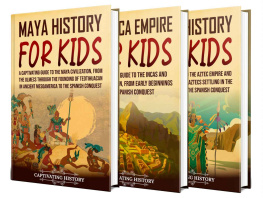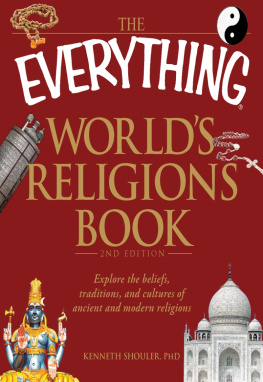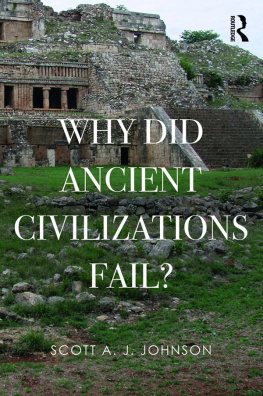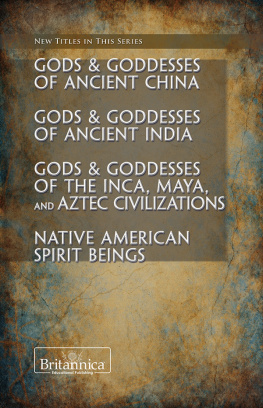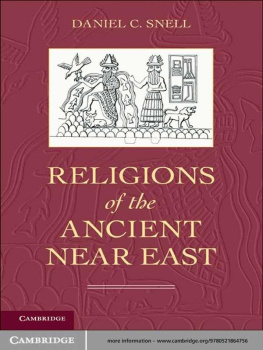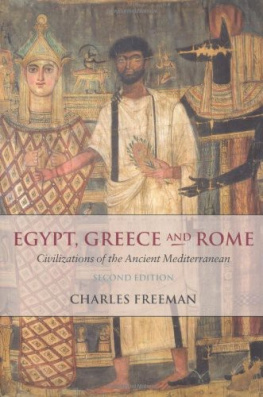John R. Hinnells (Ed.) - 27 Aug
Here you can read online John R. Hinnells (Ed.) - 27 Aug full text of the book (entire story) in english for free. Download pdf and epub, get meaning, cover and reviews about this ebook. year: 27 Aug 2009, publisher: Penguin, genre: Science fiction / Religion. Description of the work, (preface) as well as reviews are available. Best literature library LitArk.com created for fans of good reading and offers a wide selection of genres:
Romance novel
Science fiction
Adventure
Detective
Science
History
Home and family
Prose
Art
Politics
Computer
Non-fiction
Religion
Business
Children
Humor
Choose a favorite category and find really read worthwhile books. Enjoy immersion in the world of imagination, feel the emotions of the characters or learn something new for yourself, make an fascinating discovery.

- Book:27 Aug
- Author:
- Publisher:Penguin
- Genre:
- Year:27 Aug 2009
- Rating:4 / 5
- Favourites:Add to favourites
- Your mark:
- 80
- 1
- 2
- 3
- 4
- 5
27 Aug: summary, description and annotation
We offer to read an annotation, description, summary or preface (depends on what the author of the book "27 Aug" wrote himself). If you haven't found the necessary information about the book — write in the comments, we will try to find it.
27 Aug — read online for free the complete book (whole text) full work
Below is the text of the book, divided by pages. System saving the place of the last page read, allows you to conveniently read the book "27 Aug" online for free, without having to search again every time where you left off. Put a bookmark, and you can go to the page where you finished reading at any time.
Font size:
Interval:
Bookmark:
PENGUIN BOOKS
THE PENGUIN HANDBOOK OF ANCIENT RELIGIONS
John R. Hinnells is Research Professor in the Comparative Study of Religions at Liverpool Hope University, Honorary Professorial Research Fellow at SOAS, University of London and Senior Member of Robinson College, Cambridge. He is author of Zoroastrians in Britain (1996) and The Zoroastrian Diaspora (2005). His edited works include The New Dictionary of Religions (1995/1997) and A New Handbook of Living Religions (1996/1998).
Handbook of
Ancient Religions
Edited by John R. Hinnells

PENGUIN BOOKS
PENGUIN BOOKS
Published by the Penguin Group
Penguin Books Ltd, 80 Strand, London WC2R 0RL , England
Penguin Group (USA) Inc., 375 Hudson Street, New York, New York 10014, USA
Penguin Group (Canada), 90 Eglinton Avenue East, Suite 700, Toronto, Ontario, Canada M4P 2Y3
(a division of Pearson Penguin Canada Inc.)
Penguin Ireland, 25 St Stephens Green, Dublin 2, Ireland
(a division of Penguin Books Ltd)
Penguin Group (Australia), 250 Camberwell Road, Camberwell, Victoria 3124, Australia
(a division of Pearson Australia Group Pty Ltd)
Penguin Books India Pvt Ltd, 11 Community Centre, Panchsheel Park, New Delhi 110 017, India
Penguin Group (NZ), 67 Apollo Drive, Rosedale, North Shore 0632, New Zealand (a division of Pearson New Zealand Ltd)
Penguin Books (South Africa) (Pty) Ltd, 24 Sturdee Avenue, Rosebank, Johannesburg 2196, South Africa
Penguin Books Ltd, Registered Offices: 80 Strand, London WC2R 0RL , England
www.penguin.com
First published in hardback as A Handbook of Ancient Religions by Cambridge University Press 2007
Published in paperback under the present title by Penguin Books 2009
Copyright John R. Hinnells, 2007
All rights reserved
The moral right of the author has been asserted
Except in the United States of America, this book is sold subject to the condition that it shall not, by way of trade or otherwise, be lent, re-sold, hired out, or otherwise circulated without the publishers prior consent in any form of binding or cover other than that in which it is published and without a similar condition including this condition being imposed on the subsequent purchaser
ISBN: 978-0-14-195666-4
Philip P. Arnold Associate Professor, Department of Religion, Syracuse University
Jean Clottes Conservateur Gnral du Patrimoine, French Ministry of Culture
Susan Guettel Cole Associate Professor, Department of Classics, SUNY, Buffalo
Rosalie David Director, The KNH Centre, University of Manchester
Hilda Ellis Davidson Deceased. Formerly Vice-President of Lucy Cavendish College, Cambridge
Benjamin R. Foster Curator of the Yale Babylonian Collection, Department of Near Eastern Languages and Civilizations, Yale University
John R. Hinnells Research Professor, Liverpool Hope University, Honorary Professorial Research Fellow, SOAS, University of London, Senior Member Robinson College Cambridge
David Lewis-Williams Senior Mentor, The Rock Art Institute, University of the Witwatersrand
J. A. North Emeritus Professor, Department of History, University College London
Gregory L. Possehl Professor of Archaeology, University of Pennsylvania
John Rogerson Emeritus Professor, Department of Biblical Studies, University of Sheffield
Edward L. Shaughnessy Professor in Early Chinese Studies, East Asian Languages and Civilizations, University of Chicago
Nicolas Wyatt Emeritus Professor, University of Edinburgh
The ancient worlds fascinate most people. Few are unmoved at the wonder and awe on seeing the Egyptian mummies, the magnificence of the civilizations of the Aztecs and Incas, and the mystery of ancient China. But the ancient world is not important simply because it is interesting; it also helps us to understand later society. Just as conquerors commonly erected their religious buildings on the holy sites of their victims (churches on temples for example), so also ancient beliefs and practices were often absorbed into later culture. In my own native county of Derbyshire, in pre-Christian times wells where water sprang apparently inexplicably from the ground were decorated with pictures made from flowers at the start of spring. Nowadays this ancient custom has been taken over by the church (and later by the tourist trade!). The pre-Christian symbols are replaced by Christian images and the village priest tours the fields blessing the wells and the lands in order to ensure fertility in the growing season. Most religions take over practices and beliefs from ancient local traditions and reformulate them and by appropriating local traditions indigenize the global religion. Ancient religious figures become local saints. That is one reason why one religion takes on a variety of forms around the world. Christianity, Islam and other traditions have been localized in this way. If one is to understand many features of modern religions, one commonly has to study the past.
This book brings together the latest research on the major cultures of the ancient worlds. Each chapter is written by a leading figure in her/his field and the team which produced this book is international, drawn from America, Britain, France and South Africa. Many have pioneered completely new areas or methods of research: for example, the work of Professor Rosalie David when she brought together a team of doctors and scientists to unwrap Egyptian mummies in the Manchester Museum and subject them to advanced medical and a range of scientific tests, or Jean Clottes discovery of hitherto unknown sites with Palaeolithic cave paintings. New evidence for ancient societies is always coming to light; some archaeological finds were made by great scholars, for example Marshalls discovery of the Great Public Bath at Mohenjo-daro as discussed and interpreted by Greg Possehl in the chapter on ancient India. New discoveries have sometimes been found accidentally, for example by the farmers working their land and uncovering sites from ancient Ugarit, or a shepherd boy finding the first Dead Sea Scrolls in a cave as discussed by John Rogerson in the chapter on ancient Israel. Alongside these discoveries there are new ways to study the finds, such as the pyramids in Aztec culture. Other chapters offer new ways to approach well-known ancient texts, for example Rogersons application of Geertzs theories to the study of the Bible. So the study of ancient societies and religions is not static, but rather an ever changing picture. Unfortunately, reconstructing a picture of ancient societies can be like putting together a jigsaw from which many, and important, pieces are missing (to use another analogy), and scholars must attempt to do so without knowing what the final picture should look like. The painstaking task of interpreting ancient sites which are not fully understood, and fragmentary stone tablets as in the case of Ugarit and Mesopotamia, is a labour of love. But the excitement of doing that jigsaw is a major drive behind some of the greatest scholarship in these fields. The work of completing that picture is a vocation for the scholars involved.
The ancient world, while inspiring a sense of awe in its students, also presents particular problems of interpretation. In some cases there are few if any texts (for example the Indus Civilization); in others we have mostly texts with relatively few material remains (as in ancient Israel). In some cases we are heavily dependent on external accounts; for example, although the Aztecs and Incas left magnificent structures, we are heavily dependent on accounts by their Christian conquerors to understand them. The view of some ancient empires is often seen through a veil of presuppositions, such as Christian readings of Jewish scriptures or the perception of ancient Rome, or the new age interest in Druids and Celtic traditions. To what extent can we rely on Herodotus account of ancient Egypt, or Christian accounts of Icelandic or Aztec religions? The study of other cultures in the modern world raises problems of presuppositions and bias, but at least one can dialogue with, or question, members of living religions. Those who study the ancient world are faced with the problems of interpreting silent stones, or understanding little-known or unknown languages, from another culture and from another age. Modern western writers commonly come from industrialized urban environments. Trying to stand aside from their conditioning in order to understand ancient, often rural, artefacts and writings requires a leap of imagination to attain an empathetic insight, as well as considerable scholarly linguistic and/or scientific archaeological expertise. Some scholars approach ancient cultures with their own agendas; for example an earlier school of biblical critics sought a better understanding of ancient Israel from studying the civilizations of Ugarit and Mesopotamia. Studying some of the great writers of classical antiquity, either in China or Greece, does not prepare us for an understanding of the broad religious practice of the time. Artefacts, structures and texts that withstood the ravages of time are often the possessions and products of the rich and powerful rulers, and may reveal little of the general culture and religion of the ordinary people.
Next pageFont size:
Interval:
Bookmark:
Similar books «27 Aug»
Look at similar books to 27 Aug. We have selected literature similar in name and meaning in the hope of providing readers with more options to find new, interesting, not yet read works.
Discussion, reviews of the book 27 Aug and just readers' own opinions. Leave your comments, write what you think about the work, its meaning or the main characters. Specify what exactly you liked and what you didn't like, and why you think so.


